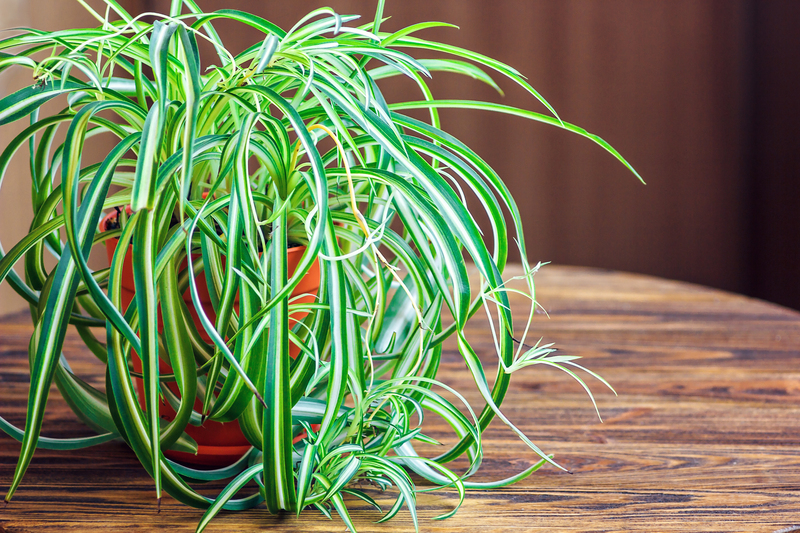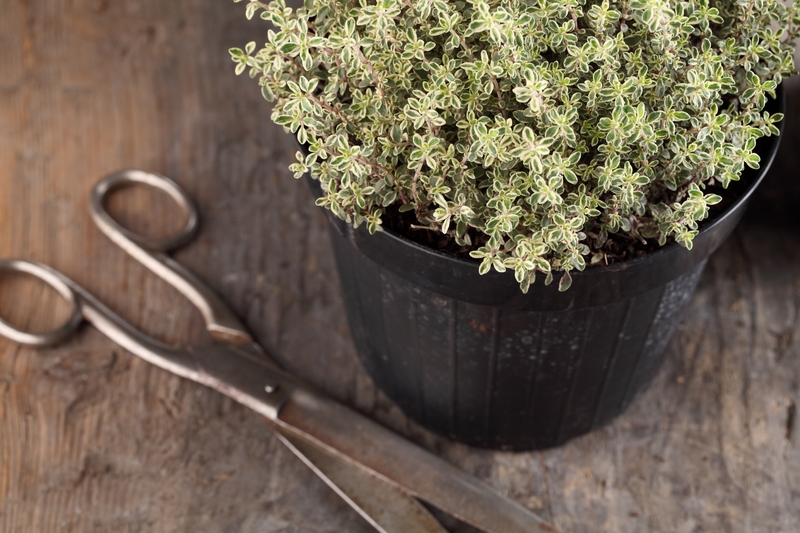Boost Your Green Space's Flexibility with These Three Tips
Is your garden or yard rigid and difficult to adapt for new uses? If you wish for a dynamic outdoor area that can support everything from tranquil evenings to lively gatherings, increasing your green space's flexibility is essential. With well-thought-out strategies, any outdoor space--large or small, urban or rural--can become adaptable to your ever-changing needs.
This article will outline three practical tips to boost your green space's flexibility, making it both functional and beautiful for all occasions. Whether you're an avid gardener, a city dweller with a balcony, or someone seeking to maximize a simple lawn, these ideas will help you unlock your garden's full potential.
Why Green Space Flexibility Matters
Your green space isn't just "out there"--it's an extension of your living area. Adapting it to your evolving lifestyle (from family gatherings to solo relaxation, or adjusting to changing weather patterns) can make your home more enjoyable year-round.
- Adapt to Changing Seasons: By introducing versatility, your garden shines in both summer and winter versions.
- Multi-Purpose Use: Transform your space into a playground, meditation retreat, or open-air dining room at will.
- Enhance Sustainability: Flexible design often relies on native or low-maintenance plants, paving the way for greener living.
Now, let's dive into the three expert-backed tips that will enhance your green space's adaptability.
Tip 1: Invest in Modular and Moveable Features
The core of any flexible garden lies in modular options--design solutions you can easily reconfigure based on your needs and preferences. Not only do moveable features offer immediate adaptability, but they also allow homeowners to experiment without permanent changes or large investments.
Popular Modular Landscaping Ideas
- Portable Planters: Unlike in-ground planting, containers and raised beds can be shifted according to sunlight, mood, or event. Try using wheeled container gardens for added mobility.
- Foldable Furniture: Opt for chairs, tables, and loungers that fold or stack. This way, you can create space when necessary or quickly assemble a setup for guests.
- Rolling Screens: Use decorative or living plant screens on wheels to create privacy, shield against wind, or define relaxation zones--then reconfigure them as needed.
Why It Works
By integrating these modular elements, your green space evolves with your life. Hosting a barbecue today and craving a yoga retreat tomorrow? Simply rearrange your moveable components. The result is a lively area that reflects you--not a stagnant arrangement destined to be outgrown.
Tip 2: Choose Multi-Functional Plants and Structures
Maximizing your green zone's adaptability isn't only about furniture or decor; it's about choosing plants and structures that serve more than one purpose. These smart selections provide flexibility in both form and function.
Selecting the Right Plants for Flexibility
Multi-purpose plants let you enjoy varied visual interest, pest resistance, shade, food, and even pollinator attraction--all from the same area.
- Edible Landscaping: Blueberry bushes, rosemary, and fruit trees offer food, blooms, and lush greenery.
- Ornamental Grasses: These sway beautifully in the wind and can double as informal barriers or erosion control.
- Climbing Vines: Plants like clematis or grapevine provide vertical interest, privacy, and even fruit or flowers for bouquets.
- Pollinator Plants: Lavender, coneflower, and bee balm attract beneficial bugs, aiding the wider ecosystem while looking gorgeous.
Tip: When planning, opt for seasonally diverse species so your green space stays attractive and productive all year long.
Structures That Do Double Duty
Modern outdoor architecture isn't just about looks; it's about maximizing utility. Consider these ideas:
- Pergolas with Retractable Covers: Open up to soak in sunshine or close to protect from rain, creating an outdoor room for all seasons.
- Raised Beds as Seating: Build planters with strong edges that double as benches, blending relaxation and greenery seamlessly.
- Storage Benches: Keep children's toys, cushions, or garden tools out of sight, yet instantly accessible.
- Garden Sheds as Workspaces: Modern sheds can become studios, hobby rooms, or reading nooks when cleverly designed.
- Vertical Gardens: Mounted on fences or walls, these free up space at ground level and can even act as privacy screens or art installations.
Investing in these multi-functional options means your garden stays ready for anything, anytime--rain or shine, guests or quiet evenings.
Tip 3: Use Zones and Smart Pathways for Adaptability
Rather than letting your outdoor space serve just one role, zoning segments your yard or balcony into distinct areas, each with its own function but the ability to blend or transform as needed. Combine this with versatile pathways for the ultimate in outdoor adaptability.
How to Create Adaptable Zones
- Temporary Dividers: Use temporary trellis panels, potted bamboo, or portable fences to physically mark spaces. Unlike permanent walls, these can be moved or removed at any time.
- Activity-Based Areas: Assign corners or sections for play, dining, gardening, or relaxing, but keep transitions easy by avoiding built-in barriers.
- Lighting Design: Use solar or battery-operated lights to define paths or 'rooms.' String lights, lanterns, or spotlights lend ambience and create visual zones that disappear at dawn.
Smart Pathways for Fluid Movement
Don't underestimate the power of well-designed pathways. Not only do they organize your garden, but they allow seamless movement between different zones and uses.
- Removable Stepping Stones: Place large pavers or eco-friendly mats that can be rearranged or lifted as requirements change.
- Gravel or Mulch Paths: These are more forgiving than concrete and easy to reconfigure for expanding garden beds or re-routing traffic flow.
- Lawn Pathways: Mow paths through tall grass or wildflowers instead of installing permanent paths--nature and flexibility combined.
By integrating zones and smart pathways, your green space can easily shift roles from week to week, maximizing lifestyle compatibility.

Bringing It All Together: Designing a Truly Flexible Green Space
True flexibility in your green space isn't accidental--it's the result of intentional design choices that emphasize moveable features, function-packed plants and structures, and zones that adapt to your life's rhythm.
Quick Checklist for Flexible Outdoor Spaces
- Can you rearrange at least half your outdoor furniture and planters?
- Do multiple areas (like seating and play) overlap or transform easily?
- Are your plantings varied enough to keep things interesting across seasons?
- Does your garden include inviting pathways and clear entry points?
- Are there both shaded and sunny spots available year-round?
If you answered "no" to several items, it's time to reimagine your green space using the strategies above.
Maximize Flexibility with These Extra Tips:
- Opt for Lightweight Materials: This makes moving planters or furniture easier, especially for balconies or rooftops.
- Use Smart Irrigation: Automated or hose-based watering systems let you shift beds and pots without reinstalling irrigation lines.
- Incorporate Weather-Ready Solutions: Store pop-up shelters or weatherproof covers to make any area usable during sudden rain or heatwaves.
- Think Vertical: Wall mountings for plants or accessories free up ground space for other uses.
Real-World Examples: Transformative Flexible Gardens
Urban Balcony Makeover
An apartment dweller in the city transformed a tiny balcony into a multi-purpose sanctuary. Using foldable chairs, stackable tables, and an array of wheeled planter boxes, she created a space that toggles between a breakfast nook, container garden, and yoga patio. Lighting and removable floor mats add further adaptability.
Family-Friendly Suburban Yard
A growing family reimagined their backyard by zoning for both play and relaxation. They installed modular raised beds that double as seating, a retractable shade over the patio, and set up a movable fire pit area. With easy-to-reconfigure elements, the space meets the needs of both adults and children, year-round.
Compact Courtyard Innovation
Even small courtyards can pack in the flexibility. By integrating a vertical garden, portable screens, and a fold-down table, an inner-city couple rotates between entertainment, dining, and gardening, proving you don't need expansive spaces for adaptability.

Frequently Asked Questions (FAQs)
- How do I start creating a flexible green space if my budget is limited?
Begin with moveable planters and inexpensive, foldable furniture. Over time, add modular or multi-functional elements as your budget allows. - Can flexible landscaping work in colder climates?
Absolutely! Prioritize winter-hardy modular pieces and multi-function structures that provide shelter or storage. Use plants with four-season interest. - Are flexible gardens hard to maintain?
No--once set up, the ability to rearrange your space can actually reduce maintenance by letting you troubleshoot issues (like pests or shade) without costly renovations.
Conclusion: Your Adaptable Oasis Awaits
By focusing on modular features, multi-functional choices, and smart zone planning, boosting your green space's flexibility is easier than ever. Whether you're looking to maximize a petite patio or overhaul a sprawling backyard, these strategies will open the door to more usability, comfort, and enjoyment--no matter the season or occasion.
Start today: Take a fresh look at your outdoor area, try one change at a time, and watch as your garden transforms into an adaptable sanctuary that truly fits your lifestyle.
Boost your green space's flexibility--with purpose, creativity, and the right tools, your outdoor haven can evolve endlessly!